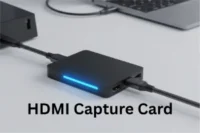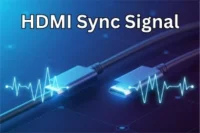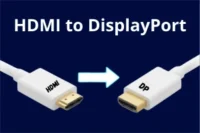HDMI Docking Station: Simple Setup and Use Guide
Published: 24 Oct 2025
Today, many people use laptops, tablets, and even mobile phones for work, study, or fun. But sometimes, these devices do not have enough ports to connect many things like a monitor, keyboard, mouse, or speakers.
This is where an HDMI Docking Station becomes very helpful.
In this article, we will learn:
- What is HDMI Docking Station?
- How does it work?
- What are its types?
- What are its features?
- Why should you use it?
And many other useful things.
So, let’s get started!
What is HDMI Docking Station?
An HDMI Docking Station is a small device that helps you connect many things to your laptop, computer, or tablet using just one main cable.
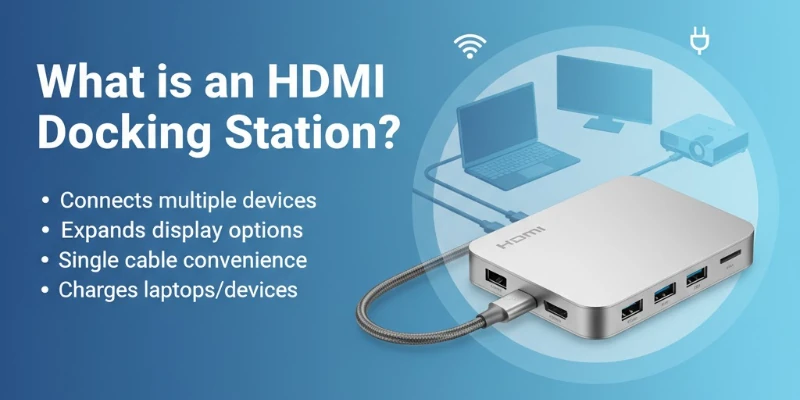
Most laptops have very few ports. But we often need to connect many things at one time like:
- Extra screen
- Keyboard
- Mouse
- Internet cable
- Speakers
- USB devices
An HDMI Docking Station gives you extra ports in one place. It mostly has an HDMI port, which helps you connect your device to a bigger screen like a monitor or TV.
In simple words:
“An HDMI Docking Station works like a helper device that gives your laptop or computer more connection options easily.”
How Does HDMI Docking Station Work?
An HDMI Docking Station works in a very simple way.
First, you connect the docking station to your laptop or computer using one main cable. This cable is usually:
- HDMI cable or USB-C cable or Thunderbolt cable (in some cases)
After connecting the docking station, you can attach many other devices to it like:
- Monitor or TV (using HDMI port)
- Keyboard
- Mouse
- Speakers
- Internet cable (LAN)
- USB devices like pen drive or hard disk
- Mobile charging cable
- Headphones
All these devices will start working together through the docking station. This means you don’t have to connect all devices directly to your laptop — only the docking station is enough.
Example for better understanding:
Just like a charger has one wire, but it can charge many devices if you use an extension — an HDMI Docking Station does the same thing for your laptop or computer.
Types of HDMI Docking Stations
There are different types of HDMI Docking Stations available in the market. Each type has its own features and use.
Let’s understand them one by one in very simple words.
1. USB-C Docking Station with HDMI
- This type connects to your laptop through a USB-C port.
- It gives you an HDMI port to connect a bigger screen.
- It also has other ports like USB, audio jack, charging port, etc.
- Mostly used with modern laptops that have USB-C ports.
2. Thunderbolt Docking Station with HDMI
- This is a faster and more powerful type of docking station.
- It uses Thunderbolt port (looks like USB-C but faster).
- It supports high-quality video and fast data transfer.
- Mostly used by professional users for heavy tasks like video editing or gaming.
3. Multiport HDMI Docking Station
- This type has many different ports along with HDMI.
- Ports like USB, SD card slot, Ethernet, audio, VGA, etc.
- It is best for people who want to connect many devices at the same time.
4. Wireless HDMI Docking Station
- This type works without wires for the display.
- It helps to connect your laptop to a screen like a TV wirelessly.
- Very useful for presentations, meetings, or home theaters.
Key Features of HDMI Docking Stations
HDMI Docking Stations come with many useful features. These features make it easy to connect multiple devices to your laptop or computer.
Let’s look at some important features one by one:
- HDMI Port → Helps to connect an extra screen like monitor, TV, or projector.
- Multiple USB Ports → Connects USB devices like mouse, keyboard, printer, or USB drives.
- Ethernet Port → Allows direct connection of internet cable for fast and stable internet.
- Audio Jack → Connects headphones, earphones, or external speakers.
- SD Card Slot → Easily reads SD or microSD memory cards.
- Power Delivery (PD) Charging → Charges your laptop while using the docking station.
- VGA Port → Connects old monitors or projectors (available in some docking stations).
- DisplayPort → Connects modern high-quality monitors (in advanced docking stations).
- Type-C Port → Extra port for connecting Type-C devices.
- Compact Design → Small in size and easy to carry anywhere.
- Lightweight → Does not feel heavy in bags or while traveling.
- Fast Data Transfer → Transfers files quickly through USB 3.0 or higher ports.
- Multi-Screen Support → Supports 2 or 3 screens at the same time (in some models).
- Plug and Play → No need for extra software; easy to use directly.
- Heat Resistant Body → Safe to use for long hours without heating problem.
Benefits of Using an HDMI Docking Station
Here are some of the major advantages of using HDMI docking station:
- Increases Productivity → Connect multiple devices at once to speed up work.
- Expands Screen Space → Allows connecting extra monitors for a larger workspace.
- Reduces Cable Clutter → Use fewer cables by connecting all devices through one station.
- Saves Time → Quickly switch between connected devices without plugging/unplugging.
- Improves Video Quality → Get high-quality video output on larger screens via HDMI.
- Portability → Carry all your connections in one small, easy-to-carry device.
- Better Connectivity → Offers stable internet and fast file transfer using Ethernet and USB ports.
- Supports Multiple Devices → Connect various devices like keyboards, mice, printers, and more at the same time.
- Keeps Laptop Charged → Some docking stations charge your laptop while in use.
- Makes Travel Easy → Ideal for people who work on the go and need easy access to connections.
- Improves Organization → Keep your desk organized by using one docking station instead of many wires.
- Enhances Video Conferencing → Useful for setting up multiple screens during online meetings or calls.
- Affordable Upgrade → Cheaper than buying separate adapters for each device.
Difference Between HDMI Docking Station vs HDMI Hub vs HDMI Splitter
These three devices may seem similar, but they are different in their function and use. Let’s break them down:
| Feature | HDMI Docking Station | HDMI Hub | HDMI Splitter |
| Function | Connects multiple devices to a laptop/PC using one connection | Expands HDMI ports on TV or monitor | Splits one HDMI signal into multiple outputs |
| Purpose | Expands connectivity options (keyboard, monitor, USB devices) | Allows multiple HDMI devices to connect to one TV/monitor | Displays the same content on multiple screens from one source |
| Key Feature | HDMI port plus other ports (USB, Ethernet, audio) | Multiple HDMI ports | One HDMI input to multiple HDMI outputs |
| Common Use | Ideal for adding ports and external displays to laptops | Useful for connecting multiple HDMI devices to one display | Used for duplicating a single HDMI signal to multiple displays |
| Devices Connected | Laptop/PC, monitor, keyboard, mouse, speakers, USB devices | TV/monitor and HDMI devices (gaming consoles, Blu-ray players) | One HDMI device to multiple monitors or TVs |
| Example Use Case | Connecting laptop to a monitor, mouse, keyboard, and speakers | Connecting gaming consoles, streaming devices to a single TV | Displaying one video from a laptop to two projectors |
Who Needs HDMI Docking Station?
An HDMI Docking Station is useful for many types of people who need extra connections or work with multiple devices.
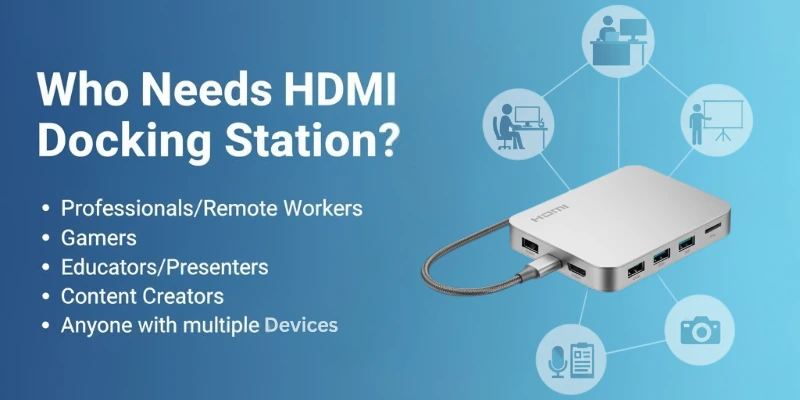
Here are some examples of who would benefit from using one:
- Students: Need to connect laptops to projectors or external monitors for presentations or study.
- Professionals and Remote Workers: Work from home or office and need to connect laptops to multiple screens, printers, or other devices.
- Gamers: Want to connect laptops or consoles to multiple monitors or TVs for an immersive gaming experience.
- Business Owners: Need to set up an organized workspace with easy connections for laptops, screens, printers, and more.
- Photographers and Video Editors: Work with high-definition content and need to connect external monitors, cameras, or SD card readers for editing.
- Travelers: Frequently travel for work and need a portable solution to connect to various devices.
- Tech Enthusiasts: Love to add extra functionality to their laptops or computers by connecting multiple devices easily.
Things to Consider Before Buying HDMI Docking Station
Before purchasing an HDMI Docking Station, it’s important to consider several factors to make sure it fits your needs. Here are the key things to keep in mind:
- Compatibility: Ensure the docking station is compatible with your laptop or computer (check USB-C, Thunderbolt, or other ports).
- Number of Ports: Choose one that offers enough ports (USB, HDMI, Ethernet, etc.) based on your device connections.
- Video Quality: Check the HDMI version and support for resolutions like 4K if you need high-quality display output.
- Power Delivery (PD): If you want to charge your laptop while using the docking station, check for Power Delivery support.
- Portability: Consider a lightweight and compact docking station if you need to carry it around while traveling.
- Build Quality: Look for a durable design, especially if you plan to use it frequently or carry it around.
- Price: Choose a docking station that fits your budget while meeting all your requirements.
- Brand and Reviews: Read reviews and consider trusted brands to ensure reliability and good customer service.
- Support for Multiple Displays: If you need more than one screen, check if the docking station supports dual or triple monitor setups.
Final Thoughts
In this article, we have covered “what is HDMI docking station” in great detail. We’ve talked about its features, benefits, and how to choose the right one for you.
Quick Summary:
- HDMI Docking Stations help you connect multiple devices like monitors, printers, and keyboards with one cable.
- They come with features like USB ports, HDMI outputs, Ethernet, and sometimes charging options.
- When choosing one, think about things like compatibility, number of ports, video quality, and price.
If you want a simpler way to organize your workspace and connect your devices, an HDMI Docking Station is a great choice.
Feel free to leave a comment if you have any questions or want to share your thoughts!
FAQs
Here are some of the most commonly asked questions related to hdmi docking station:
HDMI Docking Stations may also be called “USB-C Docking Stations,” “Laptop Docking Stations,” or “USB Docking Stations.” These names are often used interchangeably because they serve similar purposes of connecting multiple devices to a laptop. The key difference usually lies in the type of port used, such as USB-C or Thunderbolt.
No, HDMI Docking Stations are not compatible with every laptop. They usually work with laptops that have a USB-C or Thunderbolt port. Before buying, check your laptop’s port type to ensure compatibility.
Most HDMI Docking Stations are plug-and-play, meaning you don’t need to install any software. You just connect the docking station to your laptop, and it should work. However, some advanced features may require drivers or software, so it’s always a good idea to check the user manual.
Yes, many HDMI Docking Stations allow you to connect two or more monitors. This is perfect for people who need more screen space for work or gaming. However, the number of monitors you can connect depends on the docking station model and the laptop’s graphics capabilities.
If your laptop already has an HDMI port, you may not need a docking station just for connecting a single monitor. However, if you need to connect multiple devices like printers, external hard drives, or other monitors, an HDMI Docking Station can expand your laptop’s connectivity options.
Some HDMI Docking Stations support Power Delivery (PD) and can charge your laptop while it’s connected. However, not all docking stations have this feature, so check the product details before purchasing. If charging is important, make sure the docking station supports it.

- Be Respectful
- Stay Relevant
- Stay Positive
- True Feedback
- Encourage Discussion
- Avoid Spamming
- No Fake News
- Don't Copy-Paste
- No Personal Attacks

- Be Respectful
- Stay Relevant
- Stay Positive
- True Feedback
- Encourage Discussion
- Avoid Spamming
- No Fake News
- Don't Copy-Paste
- No Personal Attacks


